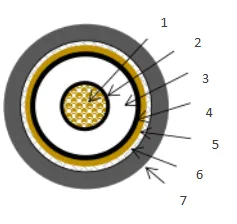វិច្ឆិកា . 22, 2024 23:01 Back to list
electric actuated butterfly valve
Electric Actuated Butterfly Valve A Comprehensive Overview
In the realm of fluid control systems, valves play a quintessential role in managing the flow of liquids and gases. Among the various types of valves, the electric actuated butterfly valve has emerged as a prominent choice due to its efficiency, reliability, and versatility. This article delves into the workings, advantages, applications, and maintenance considerations of electric actuated butterfly valves.
Understanding the Electric Actuated Butterfly Valve
The butterfly valve is a quarter-turn rotational valve that resembles a disc or a plate (the “butterfly”) mounted on a rotating shaft. When the valve is closed, the disc is perpendicular to the flow direction, effectively blocking the passage of fluid. In contrast, when the valve is fully open, the disc aligns parallel to the flow, allowing for minimal resistance and unrestricted flow. Electric actuators facilitate this process by automatically rotating the valve’s shaft, transforming electrical energy into mechanical energy.
Electric actuated butterfly valves combine the mechanical efficiency of traditional butterfly valves with the precision of electric actuation. The actuators provide the necessary force to turn the disc, enabling seamless operation without the need for manual intervention.
Advantages of Electric Actuated Butterfly Valves
1. Precision Control Electric actuators allow for precise control over the valve position, leading to accurate flow regulation. This is particularly essential in processes requiring meticulous fluid management.
2. Reduced Labor Costs Automation through electric actuation reduces reliance on manual operation, thereby lowering labor costs and allowing for a more streamlined workflow.
3. Energy Efficiency These valves typically require less energy to operate than other types of actuated valves, making them a cost-effective option over time.
4. Compact Design Electric actuated butterfly valves have a compact design, occupying less space than other valve types. This makes them ideal for installations in tight spaces.
6. Versatility They are suitable for a variety of applications, including water treatment, chemical processing, HVAC systems, and food and beverage production.
electric actuated butterfly valve

Applications
Electric actuated butterfly valves are widely used across numerous industries. In the water treatment sector, they are crucial for regulating the flow of purified water and controlling wastewater systems. Chemical processing facilities rely on these valves to manage toxic or corrosive fluids safely and effectively.
In the HVAC industry, they play a vital role in controlling airflow in ventilation systems. Additionally, in food and beverage manufacturing, these valves ensure that production processes remain hygienic and efficient by preventing unwanted contamination during fluid transfers.
Maintenance Considerations
While electric actuated butterfly valves are generally robust, some maintenance practices can help ensure their longevity and optimal performance
1. Regular Inspections Routine checks for wear and tear on both the valve and actuator can prevent breakdowns. Look for signs of corrosion, leakage, or damage to the wiring.
2. Lubrication While many electric actuators are designed to be maintenance-free for years, periodic lubrication of moving parts can enhance performance.
3. Calibration Periodically calibrating the actuator ensures that it responds accurately to control signals, which is crucial for maintaining precision in fluid control.
4. Electrical Safety Regularly inspect electrical connections and wiring for any signs of damage or degradation due to environmental factors or wear.
5. Training for Operators Operators should be adequately trained to understand the operation and troubleshooting of electric actuated butterfly valves to prevent mishandling and ensure efficient use.
Conclusion
Electric actuated butterfly valves represent a significant advancement in fluid control technology. Their combination of efficient operation, precise control, and versatility makes them a preferred choice across various industries. With thoughtful integration, regular maintenance, and attention to tuning, they can provide reliable service, contributing to the efficiency and safety of industrial operations. As technology continues to evolve, these valves are likely to become even more sophisticated, further solidifying their place in modern fluid management systems.
Share
-
Reliable Wafer Type Butterfly Valves for Every IndustryNewsJul.25,2025
-
Reliable Flow Control Begins with the Right Ball Check ValveNewsJul.25,2025
-
Precision Flow Control Starts with Quality ValvesNewsJul.25,2025
-
Industrial Flow Control ReliabilityNewsJul.25,2025
-
Engineered for Efficiency Gate Valves That Power Industrial PerformanceNewsJul.25,2025
-
Empowering Infrastructure Through Quality ManufacturingNewsJul.25,2025


